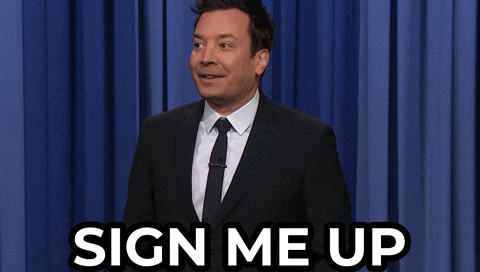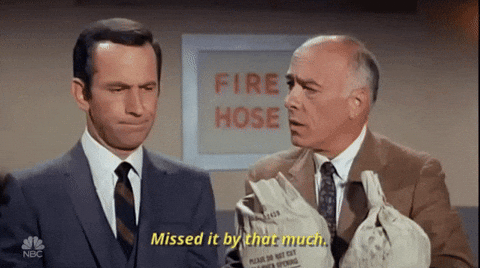Hey everyone and welcome to another running article!
First of all, if you are new, welcome! Make sure you are subscribed and you can get these letters straight in your inbox!
Today I want to talk about what’s next in my running journey and what you can look forward to content-wise.
I mentioned in my last article that I thought my next race would be the Asheville Marathon 2025!
Well, it’s official, I am signed up!
Let’s talk about what my pace goal is.
Boston Lowers Rates
I know I’ve mentioned before but I want to get into all the marathon majors eventually. And Boston is the only one that requires a certain time to qualify for entry.
Well, if you know a runner or even if you don’t, then you may have heard this big news.
Just like the Fed, Boston has officially lowered their rates.
Although, by lowering their rates, I mean they’ve lowered their time to qualify. And when we are talking about running, a lower qualifying time makes things harder, not easier.
For a long time, my qualifying time was a 3:00 marathon. However, Boston has decided that for my age group the new standard is a 2:55 marathon.
I know what you are thinking… “psh, 5 minutes, that’s nothing. You’re already running for almost 3 hours, what’s the big deal?”
Well, in the marathon world, as crazy as it sounds, 5 minutes is a pretty good chunk to take off. And it only gets harder the faster you go.
To put it in perspective the current world record is 2:00:35. At those paces, even that extra 36 seconds to get him under the 2 hour mark (the current holy grail pro marathoners are going for) was too difficult a feat.
To go from a 3:00 marathon to a 2:55 marathon means your average minute per mile pace drops around 12 seconds per mile. Which, again, for non-runners, that might not sound like much. But it is a decent challenge, you’ll just have to trust me.
And because of this, I’ve seen lots of upset people out there. But to be honest, I do think this is a good move from the Boston Athletic Association.
See, Boston can only allow 30,000 runners every year. And as the sport has gotten more popular over the years, the number of qualified entries has gone up over time. I believe Boston 2025 had over 36,000 entries!
What that means is that 6,000 people who hit their qualifying time were rejected.
The way they do the cutoffs is by lowering the standards until they hit 30,000 people. That means they fill up those 30K spots with the fastest qualifying people first. Then the slower people who still worked hard to qualify and crushed and rejected.
I saw a guy who was well under the qualifying time of 3:00, but with the new cutoff missed his chance at Boston by 1 second! He was devastated and might not even try again.
So when the qualifying time was 3:00, I knew if I even wanted a chance of getting in I probably needed closer to a 2:54 marathon anyways.
At least now it’s official.
And so that is my incredibly lofty goal: a 2:54 marathon.
It’s daunting to look at, but it’s something I know my body is capable of doing if I can get the proper training, nutrition, and time in.
Training Starts Nowish
Which means that, although the race is about 6 months away, my training really has to start about now.
I won’t be doing big intense marathon training sessions tomorrow, but it does mean that I’m going to start increasing my weekly mileage slowly so that when I get to that 16 week marathon training block I have a good high weekly mileage already.
I can also take this time to look at what worked and what didn’t work in my last training block.
Was I eating enough? Was I eating the right foods for my runs? Was I doing the right workouts, getting enough miles in per week, and was I actually hitting the hard quality sessions with everything I had?
That last one is definitely something I need to improve on. I remember plenty of harder quality sessions where paces were too slow and I allowed it because I was tired. But by pushing myself to hit those paces no matter how tired I am, it not only grows my running ability and adaptability, but it also helps mimic that final push I need in the marathon.
So far in my marathon journey, my first half of the race has been golden. And it’s not until mile 18 or so that I hit a wall and can’t push past it. I’m not alone in this…there are countless memes about this reality for marathon runners.
A common saying is that a marathon is really just a 10K race with a 20 mile warmup. But it’s important to have the energy necessary to attack that 10K race.
Which also means I am going to put in more time and effort into planning a good pacing strategy for the race, AND stick to it. Which is also a big mistake I’ve made in the past.
No matter how good I think I feel at the beginning, I must stick to the pacing strategy.
Content Plans
Now, during all this training, I am planning to increase my content creation. Especially on here, Substack, but also on Instagram and YouTube.
This marathon block is not only going to push me physically, but also push me in my creativity.
I want to learn how to build good content on social media, a skill I think is becoming more and more valuable and more and more necessary over time. And I believe it will only continue to grow.
As such, I am going to be posting weekly content here, as well as YouTube and Instagram. My plan is to really start that closer to when I jump into my more intense marathon block in December. It will all focus around my YouTube 16 week marathon training series where I’ll give detailed guides to my training, nutrition, what it’s like to train in the mountains, benefits to mountain runs, and more!
But until then, make sure to go ahead and follow and subscribe on those platforms: @themeyerperspective
Other Races
I will also be documenting some other races as well. It’s important to get in some “tune up” races along the way.
This helps get used to race day jitters by going into a race with low stakes. But more importantly, it also helps me know if I’m on track.
I already know we have our eye on a half marathon in late January, but we might throw in a 5K somewhere in the next few months too.
The idea is if you can run an X-time 5K, you should be able to get an X-time marathon.
For example, they say if I want to run a 2:54 marathon, I should be able to run an 18:10 5K. So, if I run a 5K before really getting into the training block, it will be a good basis to know where I’m starting.
Until next time!
Remember, run with joy!










